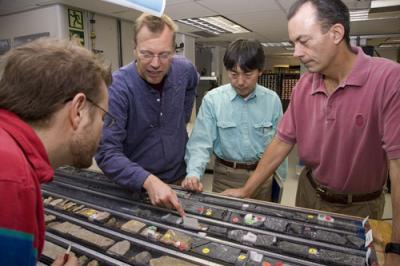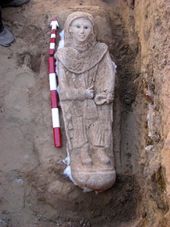
© Colin A. Hope/Monash UniversityPottery decorated in a distinctive pale blue color was in vogue in New Kingdom Egypt, particularly during the reign of Amenhotep III and Ramesses II.
While most Egyptian pottery was undecorated, during the New Kingdom - Egypt's Golden Age - a variety of pottery was elegantly decorated in a distinctive pale blue.
The pottery has been found at many sites in Egypt, the Middle East, and Sudan, with most of it being in Egypt. Given the restricted use of the blue paint, it probably was available only to artisans associated with major royal residences.
To obtain an uncontaminated sample of the blue paint for chemical analysis, Dr. Jennifer Smith, who is an associate professor at Washington University in St. Louis (WUSTL), Dr. Colin Hope, associate professor and director of the Center for Archaeology and Ancient History at Monash University in Australia, and Paul Kucera, a doctoral student at Monash University, belly-crawled through a long, narrow tunnel at a desert oasis. The tunnel was carved in the rock by Egyptians at the time of the pharaohs.
Although some Egyptian sculptures were colored by adding ground copper to ground quartz, the pale blue pottery was thought to be decorated by cobalt.





Comment: For more information, see SOTT's Best of the Web Article: Cosmic Climate Change: Space Shuttle Discovery - STS 131 leaves spectacular dragon trails in the sky